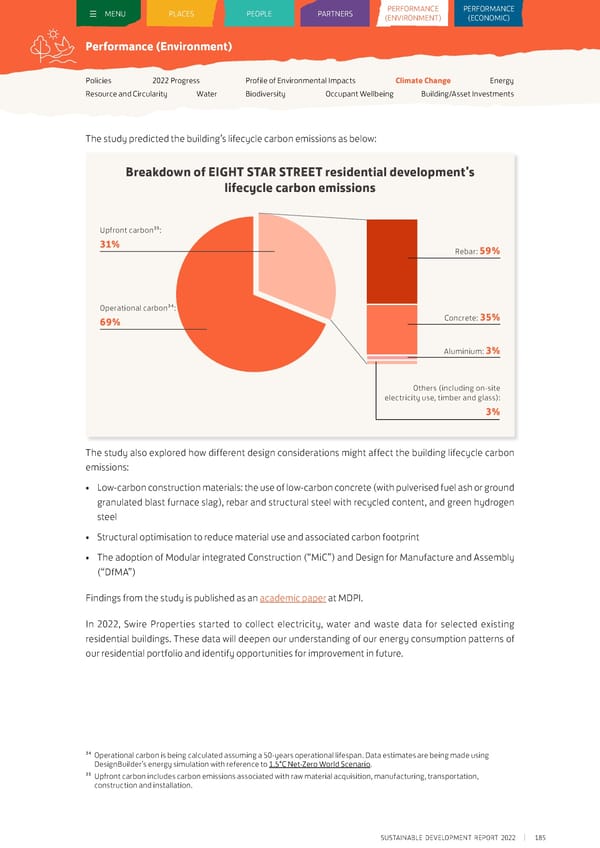MENU PLACES PEOPLE PARTNERS PEPERRFOFORRMMAANNCCEE PERFORMANCE ((ENENVVIIRROONNMENMENTT)) (ECONOMIC) Performance (Environment) Policies 2022 Progress Profile of Environmental Impacts Climate Change Energy Resource and Circularity Water Biodiversity Occupant Wellbeing Building/Asset Investments The study predicted the building’s lifecycle carbon emissions as below: Breakdown of EIGHT STAR STREET residential development's lifecycle carbon emissions Upfront carbon³5: 31% Rebar: 59% Operational carbon³4: Concrete: 35% 69% Aluminium: 3% Others (including on-site electricity use, timber and glass): 3% The study also explored how different design considerations might affect the building lifecycle carbon emissions: • Low-carbon construction materials: the use of low-carbon concrete (with pulverised fuel ash or ground granulated blast furnace slag), rebar and structural steel with recycled content, and green hydrogen steel • Structural optimisation to reduce material use and associated carbon footprint • The adoption of Modular integrated Construction (“MiC”) and Design for Manufacture and Assembly (“DfMA”) Findings from the study is published as an academic paper at MDPI. In 2022, Swire Properties started to collect electricity, water and waste data for selected existing residential buildings. These data will deepen our understanding of our energy consumption patterns of our residential portfolio and identify opportunities for improvement in future. ³4 Operational carbon is being calculated assuming a 50-years operational lifespan. Data estimates are being made using DesignBuilder’s energy simulation with reference to 1.5°C Net-Zero World Scenario. ³5 Upfront carbon includes carbon emissions associated with raw material acquisition, manufacturing, transportation, construction and installation. SUSTAINABLE DEVELOPMENT REPORT 2022 185
 Sustainable Development Report 2022 Page 185 Page 187
Sustainable Development Report 2022 Page 185 Page 187